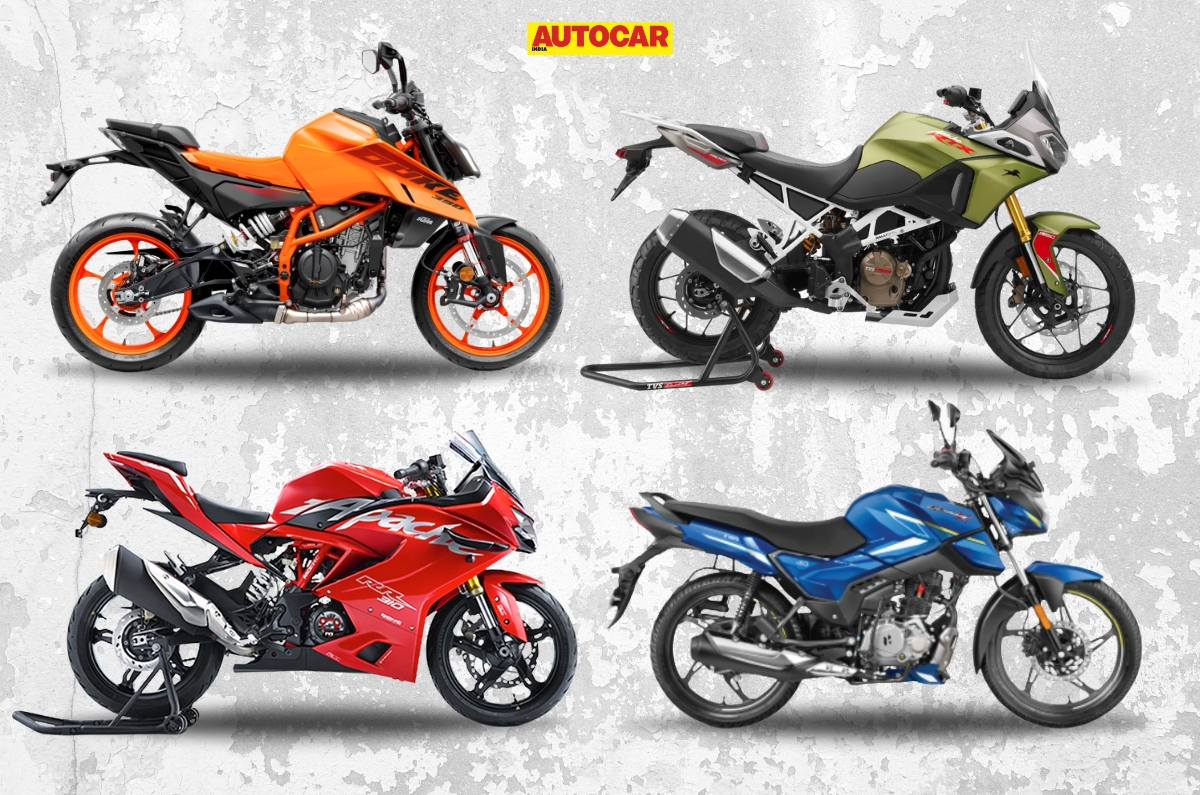When was the last time you went on a really long ride? Yes, we know — it’s frustrating. But even as you await the end of Covid-19 and hatch plans for a serious expedition, make sure you have all your documents in order. The consequences of failing to do so are pretty serious.
Documents every rider should carry
It is mandatory to carry bike documents under the Motor Vehicle Act of 1988. Failing to do so can result in substantial penalty fines. These documents not only aid in the legal verification of your bike, but also protect you financially in the event of an accident. The following documents are required to ride a two-wheeler in India:
- Two-wheeler Registration Certificate
- Driving License
- Bike Insurance Papers
- Pollution Under Control Certificate (PUCC)
- Two-Wheeler Fitness Certificate
- Rider’s Medical Certificate
Let’s know get to understand these documents better:
Registration Certificate
The Registration Certificate or RC verifies the bike's validity and ownership. It also serves as proof of your vehicle being registered with the local Regional Transport Office (RTO). It specifies the vehicle's category, the territorial border within which one can operate it, the chassis and engine number, the cubic capacity and the fuel used. It also includes the vehicle's owner information.
According to the Motor Vehicle Act of 1988, all vehicle owners must have a valid RC. You would be permitted to use the vehicle on Indian roads only if your vehicle is registered with the RTO. Your registration certificate is valid for 15 years from the date of issuance.
On the expiry of your registration certificate, you can get it renewed for another five years. However, if you own a temporary registration certificate, it will be valid only for a month.
Driving License
In India, a driving license allows you to drive a specific type of vehicle such as a two-wheeler, four-wheeler or commercial vehicle, within territorial borders. Your two-wheeler rider's license is an official document issued by the Indian government that allows you to ride your bike. It certifies that the owner knows how to ride a bike and has passed the required riding test that demonstrates compliance with traffic laws and regulations. The driving license, or DL, also includes information about the type of two-wheeler you are permitted to ride—with or without gear. Make sure you are riding a bike that meets the specifications of your driver's licence. The minimum age for applying for a driving license in India is 18 years. If you are below 18 years of age, then you are not permitted to ride. In case of a violation, your parents can be legally held liable.
According to the Motor Vehicle Act of 1988, riding a two-wheeler requires the rider to have his or her driver's license. If the traffic police catch you riding without a DL, he/she can fine you. As per the new rule, you can now save a digital copy of your driver's license or attach it to government apps such as DigiLocker.
Bike Insurance Policy
Two-wheeler insurance will cover any damage to your bike or scooter due to road accidents, natural disasters, theft or loss. Your bike insurance covers the damage to your two-wheeler and the legal obligation to third parties in case of a mishap involving them. When riding a bike on highways, you must have a two-wheeler insurance policy. The document is proof that the bike has mandatory third-party bike insurance and an optional bike own damage policy.
The name of the insurance company, bike’s registration number, the kind of coverage, the policy's duration, and the maximum coverage are all listed on the insurance policy document. The Motor Vehicle Act 1988 requires you to carry the bike insurance policy document with you at all times. In India, there are usually three types of insurance policies:
· Third-party Bike Insurance
A third-party bike insurance cover is one of the most common forms of two-wheeler insurance. It covers any loss or damage caused to a third-party person, vehicle, or property, in the event of a collision or an accident involving the insured vehicle.
Coverage under the third-party policy: If a person suffers an injury due to an accident, his or her medical expenses will be taken care of until the person recovers. In the terrible event of a death, monetary compensation is also provided.
What is not covered in third party insurance? Accidents caused due to drunken driving, use of a vehicle for illegal or commercial purposes, accidents that are determined as intentionally caused or driving without a licence are the situations not covered under third-party insurance.
· Bike Own-Damage Policy
The Insurance Regulatory and Development Authority of India (IRDAI) introduced a standalone own damage bike insurance plan in September 2019. Bike own-damage policy is a standalone form of bike insurance that solely covers your bike's own damages. The plan protects your bike from damage caused by accidents, natural catastrophes, fire, manmade disasters, theft and those sustained while in transit.
· Comprehensive Two-wheeler Policy
A comprehensive bike insurance policy offers its customers extensive coverage for all types of unexpected incidents, allowing you to ride your bike without worry. It is a mix of third-party liability and own damage policy. It provides coverage in the case of accidental damage to your bike or injury to a third party. It also covers any loss, theft, or damage incurred due to natural calamities.
Pollution Under Control Certificate (PUCC)
The PUCC certificate serves as an approval document. It includes details of your vehicle's emission levels and if they meet the required pollution standards. Authorized emission testing centres located at various petrol pumps across India perform emission level testing.
Rule 115(2) of the Central Motor Vehicles Act, 1989 sets the emission levels or pollution limits for motor vehicles in India. The government revises vehicle emission regulations to keep pollution levels under check. The government issues the PUCC after testing the emission levels of your motorcycle. If the emission levels are within the prescribed limit, the bike gets certified.
According to the Ministry of Transport's Central Motor Vehicles Act, 1989, a PUC Certificate must be carried by the driver or rider of a vehicle at all times.
Vehicle Fitness Certificate
Your vehicle must be in perfect working condition if you want to ride it on public roads. For the fitness certificate, the vehicle’s working condition is inspected at the RTO. The bike is checked for emission issues, mechanical and technical faults, among others. Once the RTO is satisfied, it issues a vehicle fitness certificate. By checking the vehicle condition, the RTO ensures the minimal release of harmful byproducts.
As per the rule, if the bike is within 15 years of age, it is considered fit to ride on the road. After that, you must obtain a bike fitness certificate to continue riding it on public roads and renew the certificate every two years. So, if you are riding a bike that is over 15 years old, make sure you have your bike’s fitness certificate with you at all times.
Rider’s Medical Certificate
Those over the age of 50 years must present a medical certificate, whenever asked for, to the authorities. The medical certificate certifies that you are medically fit to ride a motorcycle. Your medical certificate must have the signature of the doctor who certifies that the applicant is medically fit to possess a two-wheeler driver's licence.
Apart from the above-mentioned documents, you also need to follow certain traffic rules. Every one of us, from vehicle owners to pedestrians, need to be aware of these rules and regulations:
- Both rider and the pillion should wear helmet.
- While riding a bike, always carry the mandatory documents with you. These documents include registration certificate, driving licence, PUCC, insurance policy, rider’s medical certificate and the bike’s fitness certificate.
- Always ride to the left of a two-way road. Slow down at zebra crossings, junctions, road corners and intersections.
- Always maintain lane discipline and use hand signals whenever necessary.
- Ensure that the bike registration number is properly inscribed on the number plate.
- Always use turn indicators.
- Don’t honk unnecessarily, you are simply making the noise pollution worse.
- Try to use high-beam lights only on dimly lit highways or roads.
- Never ride on the footpaths and always give way to pedestrians.
- Never park your two-wheeler near a road junction or on a bridge or flyover. The same applies to footpaths.
- Keep a close eye on the traffic and road signs.
So, make sure all your documents are ready for the time when the pandemic would become a thing of the past and you can compensate for all the lost time with your bike. And do check if your insurance policy is still valid.

.jpg?w=728&q=75)
























